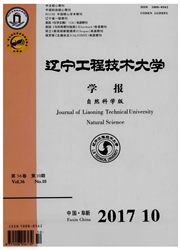

 中文摘要:
中文摘要:
为了解采用Kaiser效应测原岩应力过程中的影响因素,应用岩石破裂过程分析软件(RFPA2D)对岩样进行数值模拟分析。结果表明:利用Kaiser效应测得的原岩应力值比真实值要小;岩石先前所受围压越大,岩石的均匀性越差,利用该方法测得的Felicity比值越小,Kaiser效应点应力值与真实值相差越大;对于均匀性极差的试样,Felicity比值曲线在首次加载施加围压后出现明显的拐点;随着岩石均质度的提高,先前所受围压对于Kaiser效应的影响逐渐降低。Kaiser效应的本质是对岩石内部损伤的记忆而不是对先前所受最大应力的记忆,要想得到准确的原岩应力,必须根据岩石的损伤本构关系对单轴加载得到的Kaiser效应点应力值进行修正。
 英文摘要:
英文摘要:
To understand the influence factors in the process of estimating in-situ stress using Kaiser effect,an numerical simulation was conducted using Rock Failure Process Analysis (RFPA2D) software.The results show that the traditional method for estimating in-situ stress using Kaiser effect is not appropriate as the stress value obtained is usually lower than real value.Furthermore,if the specimen with higher confining compression and lower heterogeneity,it would result in greater difference between the Kaiser effect stress obtained from uniaxial loading in laboratory and the real value of in-situ stress.For the specimens with very low heterogeneity,there is an inflexion point on Felicity ratio curves after the uniaxial loading and confining pressure is applied in the first loading cycle.The effect of confining stress level in previous loading cycle tends to be less with the increase of rock heterogeneity.The mechanism of Kaiser effect is the memory of damage level in rock.Therefore,to accurately estimate the in-situ stress,the adjustment on the Kaiser effect stress value obtained from uniaxial loading must be made based on the damage constitutive relation.
 同期刊论文项目
同期刊论文项目
 同项目期刊论文
同项目期刊论文
 Experimental and theoretical analysis on the procedure for estimating geo-stresses by the Kaiser eff
Experimental and theoretical analysis on the procedure for estimating geo-stresses by the Kaiser eff 期刊信息
期刊信息
